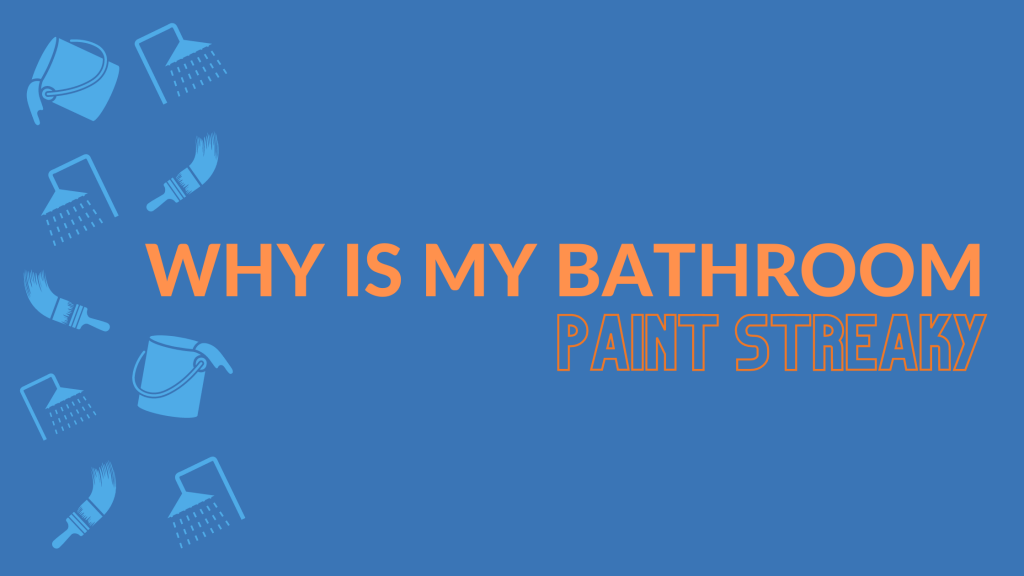Why Is My Bathroom Paint Streaky?

If you’ve started to notice unsightly streaks along the walls of your bathroom, you’re not alone. Paint is designed to stick to the surface it’s applied to. Unfortunately issues arise with this when moisture, temperature fluctuations, and incompatible products come into play.
Surfactant Leaching
Surfactants are water-soluble ingredients commonly found in latex paints used to paint bathrooms. Surfactants usually rise to the surface of paint when it dries. When those surfactants are exposed to moisture or humidity during the drying process of the paint, they can rise a little too quickly to the paint surface and settle, which can result in wall and ceiling stains (which is immediately noticeable) or surfactant leaching.
The stains left behind specifically from surfactant leaching are what causes the streaking or weeping you see in your bathroom. It can appear wet, discolored, glossy, soapy, or even sticky, depending on the finish of the paint used. While unattractive in appearance, fortunately surfactant leaching doesn’t actually harm the coating of the paint that’s beneath it.
One thing to note, though, is that the discoloration from surfactant leaching IS NOT the same as water stains or spots – which are signs of a more serious issue!
What You Can Do To Prevent Streaky Paint Surfactant Leaching
- Try to reduce humidity and increase airflow to prevent condensed moisture in your bathroom while applying paint to ensure paint dries correctly
- Use an interior paint designed specifically for bath and spa application – A high quality, room specific latex paint designed for optimal performance in high-humidity interior environments will usually prevent surfactant leaching because the paints are designed to withstand moist, humid environments
- Opt for lighter tints – Deeper colored paints are often tinted with universal colorants that contain extra surfactants which are more apt to cause surfactant leaching, especially when applied in bathrooms
How To Repair Streaks Caused By Surfactant Leaching
While you might be tempted to cover up the discoloration caused by surfactant leaching by painting over, the best thing you can do is actually not paint over the stains!
Instead rinse the surface with water or wipe the streaks with a damp cloth as soon as you start to notice streaks. Because the surfactant leaching is caused by surfactants coming to the surface of the paint, it will usually be remedied over time as the normal weathering removes surfactant stains naturally.
Interested in doing more than a quick touch up paint to your bathroom?
Call go2-pros bathroom renovations for your next bathroom remodel.
